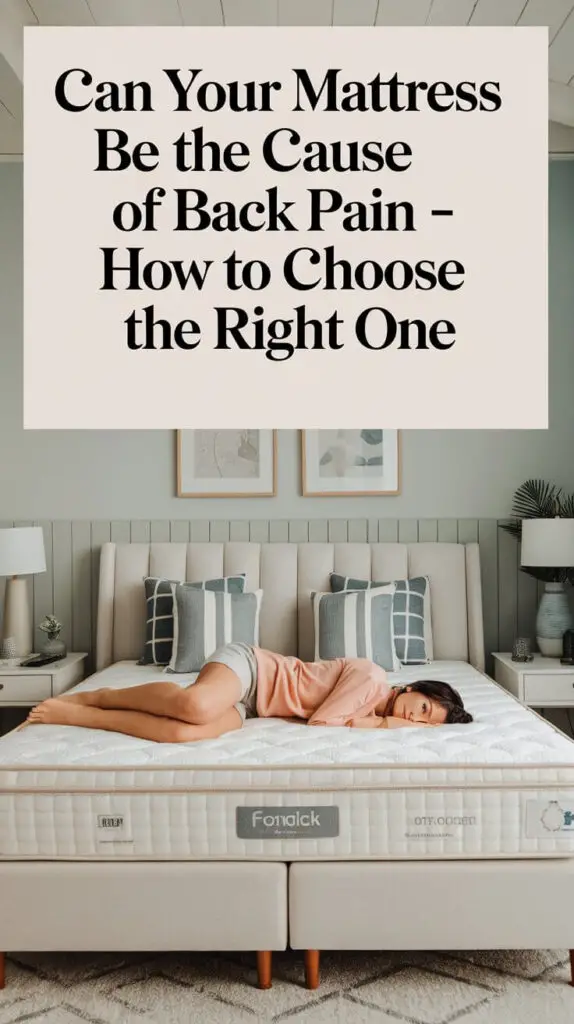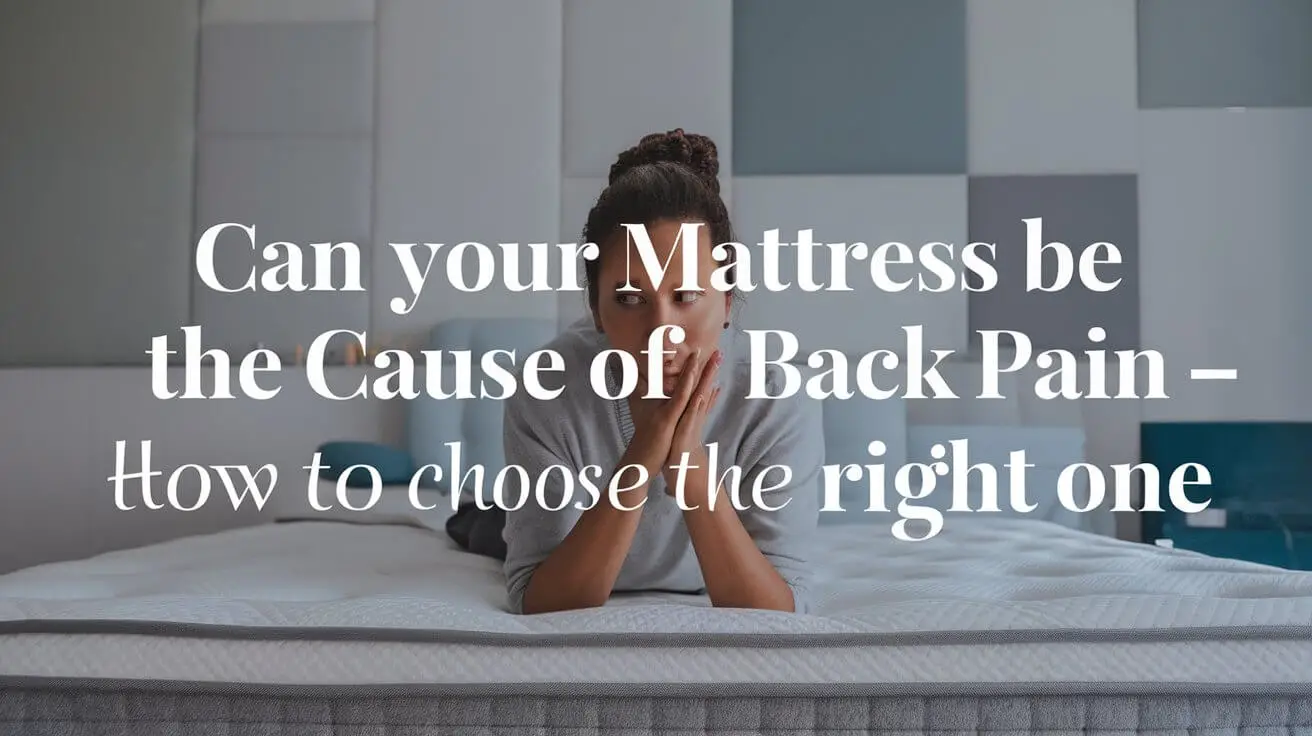If you are waking up with a sore back or feeling stiff every morning, your mattress might be the culprit. Back pain is a common issue, and many people don’t realize how much their sleeping surface affects their spine, posture, and overall comfort. I’ve dealt with back pain caused by an old, unsupportive mattress, and changing it made a world of difference.

In this article, I’ll share how mattresses impact your back health, signs that yours might be causing pain, and tips for choosing the right one to ensure restful and pain-free sleep.
How Your Mattress Affects Your Back
A good mattress should provide a balance of support and comfort. It needs to keep your spine aligned in a neutral position while also cushioning pressure points like your shoulders and hips.
When a mattress is too soft, your body might sink in too much, leading to poor posture and strain on your lower back. On the other hand, a mattress that’s too firm can create pressure points, causing discomfort and pain over time.
My Experience: A few years ago, I had a mattress that felt comfortable at first but quickly started sagging in the middle. I woke up with a stiff lower back almost every day. I didn’t realize how much it was affecting me until I replaced it with a supportive yet comfortable mattress. The improvement was immediate.
Signs Your Mattress Might Be Causing Back Pain
Not sure if your mattress is the problem? Here are some clues:
-
You Wake Up in Pain
Morning back pain that improves as the day goes on is a common sign that your mattress isn’t supporting you properly. -
Visible Sagging or Lumps
A mattress with sagging areas or uneven surfaces can throw your body out of alignment while you sleep. -
You Toss and Turn All Night
If you’re constantly shifting positions to get comfortable, it might mean your mattress isn’t meeting your needs. -
Your Mattress Is Over 7-10 Years Old
Most mattresses have a lifespan of around 7-10 years. Over time, materials break down, and the mattress loses its ability to provide proper support. -
You Sleep Better Elsewhere
If you notice your back feels better after sleeping on a hotel bed or a friend’s mattress, it’s a clear sign that your mattress at home might be the issue.
How to Choose the Right Mattress for Back Pain
When it comes to picking a mattress, there isn’t a one-size-fits-all solution. However, there are key factors to consider:
1. Firmness Level
- A medium-firm mattress is often recommended for people with back pain, as it provides a good balance of support and comfort.
- If you sleep on your back, look for a mattress that supports the natural curve of your spine.
- Side sleepers might prefer something slightly softer to cushion their shoulders and hips.
2. Material Options
- Memory Foam: Known for its ability to contour to your body, memory foam can relieve pressure points and keep your spine aligned.
- Innerspring: Offers a traditional bouncy feel and can provide strong support, but make sure it has enough cushioning for comfort.
- Hybrid: Combines memory foam and innerspring, offering the best of both worlds—support and comfort.
- Latex: A durable and natural option, latex mattresses provide good support and are resistant to sagging.
3. Your Sleeping Position
- Back Sleepers: Look for a medium-firm mattress that supports the lower back without letting it sink.
- Side Sleepers: A softer mattress helps cushion the hips and shoulders, reducing pressure points.
- Stomach Sleepers: A firmer mattress prevents the lower back from arching unnaturally.
Tips for Testing and Buying a Mattress
-
Test It In-Store
Spend at least 10-15 minutes lying on a mattress in your usual sleeping position. This helps you get a real sense of its comfort and support. -
Check the Return Policy
Many companies offer trial periods, allowing you to test the mattress at home for several weeks. This is especially helpful when buying online. -
Don’t Be Afraid to Invest
A high-quality mattress can be expensive, but it’s an investment in your health and well-being. Consider it an essential purchase, not a luxury. -
Look for Reviews
Customer reviews can provide valuable insights into the performance and durability of a mattress.
Maintaining Your Mattress for Longevity
To keep your mattress in good shape and extend its lifespan, follow these tips:
1- Rotate It Regularly: Rotate or flip your mattress every 3-6 months to prevent uneven wear.
2- Use a Mattress Protector: Protectors guard against spills, stains, and allergens.
3- Keep It Clean: Vacuum your mattress periodically to remove dust and allergens.
4- Support It Properly: Ensure your bed frame or foundation provides adequate support for the mattress type.
Conclusion
Choosing the right mattress is essential for managing back pain and ensuring good sleep quality. Your mattress should provide the right mix of support and comfort, aligning your spine and relieving pressure points.
From my experience, investing in a better mattress significantly reduced my back pain and improved my overall well-being. If you’re struggling with persistent back pain, evaluate your mattress and consider upgrading to one that meets your specific needs.
Remember, a supportive mattress is just one part of the equation. Combine it with other healthy habits, such as regular exercise and proper posture, for the best results.
